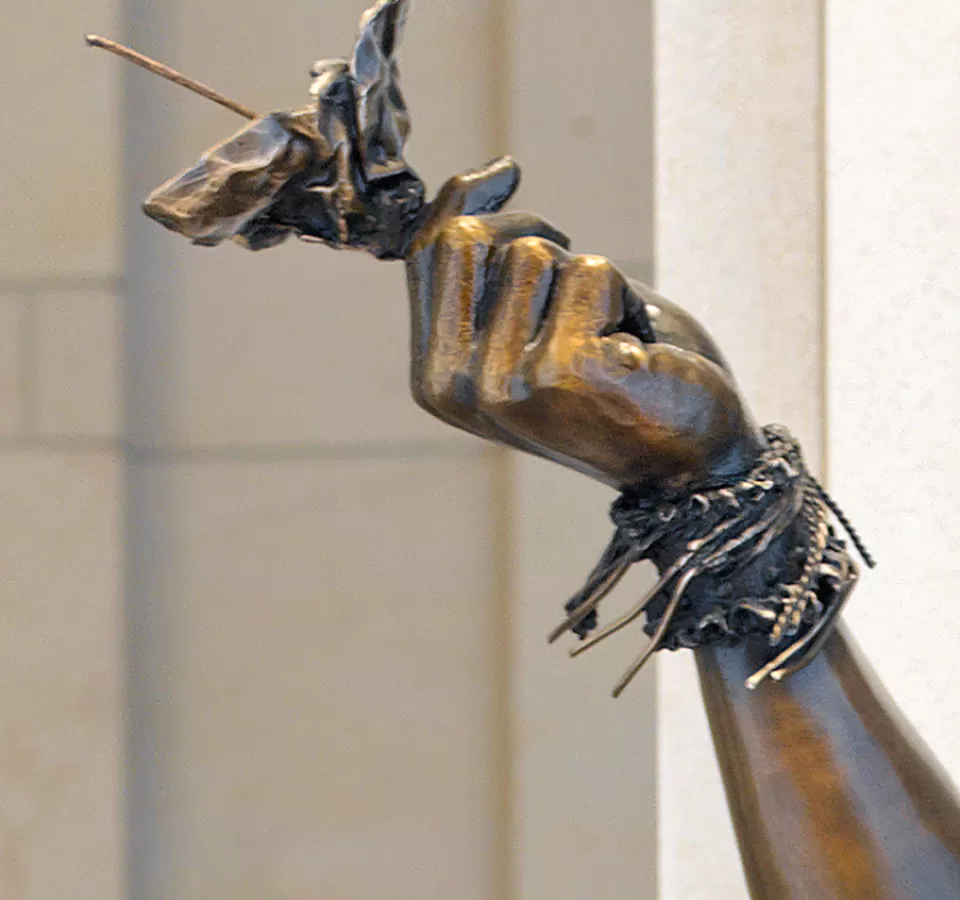Image Gallery



This statue of Sarah Winnemucca was given to the National Statuary Hall Collection by Nevada in 2005.
Sarah Winnemucca (1844–1891) was a member of the Paiute tribe born in what would later become the state of Nevada. She was the daughter of the Chief Winnemucca and granddaughter of Chief Truckee. Her Paiute name was Thocmetony (or Tocmetoni), which means "shellflower"; it is not known why or when she took the name Sarah. Having a great facility with languages, she served as an interpreter and negotiator between her people and the U.S. Army. In 1878 when the Bannock Indians revolted and were being pursued by the U.S. Army under General Oliver Howard's command, Sarah volunteered for a dangerous mission. Locating her father’s band being forcibly held by the Bannocks, she secretly led them away to army protection in a three-day ride over 230 miles of rugged terrain with little food or rest.
As a spokesperson for her people, she gave over 300 speeches to win support for them, and she met with President Rutherford B. Hayes and Secretary of the Interior Carl Schurz in 1880. Her 1883 autobiography, Life among the Piutes: Their Wrongs and Claims, was the first book written by a Native American woman. She started a school for Native Americans, where she taught children both in their native language and in English. She was married at least twice, first to Lieutenant Edward C. Bartlett and later to Lewis H. Hopkins. Sarah Winnemucca died in 1891.
The bronze statue depicts Sarah Winnemucca as she looked around the age of 35, with hair falling to her waist. She wears a dress adorned with fringe that swirls as if windswept; this and her stance impart a sense of movement. In her right hand she holds a shellflower aloft and with her left arm she holds a book at her side.
A plaque affixed to the pedestal reads:
Sarah Winnemucca
1844–1891
Nevada
Defender of Human rights
Educator
Author of first book by a Native woman
This podcast is part of the Shaping History: Women in Capitol Art series created by the U.S. Capitol Visitor Center. Listen below to hear about the women artists and women historical figures depicted in the art of the Capitol.
Download the transcript or read more about this episode.
Benjamin Victor (1979- ) initially learned about art from his grandmother, an art professor. He first tried sculpting at Northern State University in South Dakota and fell in love with working in three dimensions. He won his first large commissions when he was still in college, including his first sculpture for the National Statuary Hall Collection. His other works in the U.S. Capitol are: Norman Borlaug (Iowa, 2014), Chief Standing Bear (Nebraska, 2019) and Daisy Bates (Arkansas, 2024). While these statues are all bronzes, he also carves marble and trained with a Florentine master stone carver.
Victor has received national and international recognition, including several awards from the National Sculpture Society. He is artist-in-residence and professor of the practice at Boise State University in Idaho. Victor also maintains a studio where he can carve marble and execute many of the elements in the bronze casting process.
Victor works in both abstract and figurative styles. Even when creating a portrait sculpture, he prefers a conceptual approach, focusing on the spirit of the person and the reason the portrait was commissioned. He edits and refines a sculpture at each step of the modeling process.


